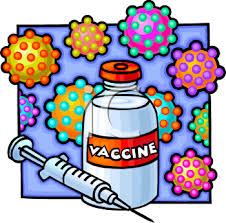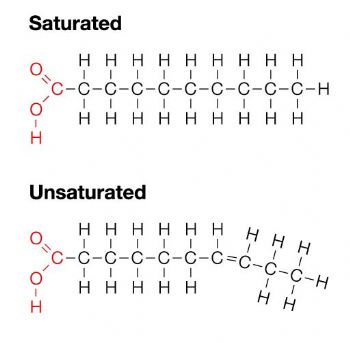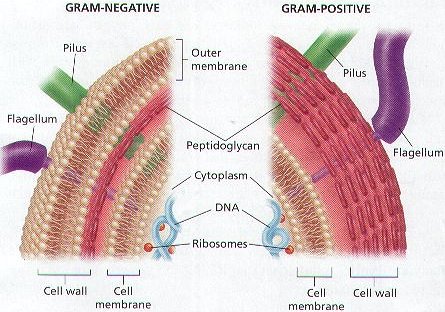| Animal Cell | Plant Cell |
|---|
| Cell wall: | Absent | Present (formed of cellulose) |
| Shape: | Round (irregular shape) | Rectangular (fixed shape) |
| Vacuole: | One or more small vacuoles (much smaller than plant cells). | One, large central vacuole taking up 90% of cell volume. |
| Centrioles: | Present in all animal cells | Only present in lower plant forms. |
| Chloroplast: | Animal cells don't have chloroplasts | Plant cells have chloroplasts because they make their own food |
| Cytoplasm: | Present | Present |
| Endoplasmic Reticulum (Smooth and Rough): | Present | Present |
| Ribosomes: | Present | Present |
| Mitochondria: | Present | Present |
| Plastids: | Absent | Present |
| Golgi Apparatus: | Present | Present |
| Plasma Membrane: | only cell membrane | cell wall and a cell membrane |
| Microtubules/ Microfilaments: | Present | Present |
| Flagella: | May be found in some cells | May be found in some cells |
| Lysosomes: | Lysosomes occur in cytoplasm. | Lysosomes usually not evident. |
| Nucleus: | Present | Present |
| Cilia: | Present | It is very rare |
------------------------------------------------------------------------------------------------------------
Comparison chart
| Meiosis | Mitosis |
|---|
| Definition: | A type of cellular reproduction in which the number of chromosomes are reduced by half through the separation of homologous chromosomes, producing two haploid cells. | A process of asexual reproduction in which the cell divides in two producing a replica, with an equal number of chromosomes in each resulting diploid cell. |
| Function: | sexual reproduction | Cellular Reproduction & general growth and repair of the body |
| Type of Reproduction: | Sexual | Asexual |
| Occurs in: | Humans, animals, plants, fungi | all organisms |
| Genetically: | different | identical |
| Crossing Over: | Yes, mixing of chromosomes can occur. | No, crossing over cannot occur. |
| Pairing of Homologs: | Yes | No |
| Number of Divisions: | 2 | 1 |
| Number of Daughter Cells produced: | 4 haploid cells | 2 diploid cells |
| Chromosome Number: | Reduced by half | Remains the same |
| Steps: | The steps of meiosis are Interphase, Prophase I, Metaphase I, Anaphase I, Telophase I, Prophase II, Metaphase II, Anaphase II and Telophase II. | The steps of mitosis are Interphase, Prophase, Metaphase, Anaphase, Telophase and Cytokinesis |
| Karyokinesis: | Occurs in Interphase I | Occurs in Interphase |
| Cytokinesis: | Occurs in Telophase I & Telophase II | Occurs in Telophase |
| Centromeres Split: | The centromeres do not separate during anaphase I, but during anaphase II | The centromeres split during Anaphase |
| Creates: | Sex cells only: Female egg cells or Male sperm cells | Makes everything other than sex cells |
| Discovered by: | Oscar Hertwig | Walther Flemming |
------------------------------------------------------------------------------------------------------------

| DNA | RNA |
|---|
| Stands for: | DeoxyriboNucleicAcid | RiboNucleicAcid |
| Definition: | A nucleic acid that contains the genetic instructions used in the development and functioning of all modern living organisms (scientists believe that RNA may have been the main genetic material in primitive life forms). |
- A single-stranded chain of alternating phosphate and ribose units with the bases Adenine, Guanine, Cytosine, and Uracil bonded to the ribose.
- RNA molecules are involved in protein synthesis and sometimes in the transmission of genetic information.
|
| Function: | Medium of long-term storage and transmission of genetic information | Transfer the genetic code needed for the creation of proteins from the nucleus to the ribosome. |
| Unique Features: | The helix geometry of DNA is of B-Form. DNA is protected in the nucleus, as it is tightly packed. DNA can be damaged by exposure to ultra-violet rays. | The helix geometry of RNA is of A-Form. RNA strands are continually made, broken down and reused. RNA is more resistant to damage by Ultra-violet rays. |
| Predominant Structure: | Double- stranded molecule with a long chain of nucleotides | A single-stranded molecule in most of its biological roles and has a shorter chain of nucleotides |
| Bases & Sugars: | Deoxyribose sugar; phosphate backbone; Four bases: adenine, guanine, cytosine and thymine | Ribose sugar; phosphate backbone. Four bases: adenine, guanine, cytosine, and uracil |
| Pairing of Bases: | A-T(Adenine-Thymine), G-C(Guanine-Cytosine) | A-U(Adenine-Uracil), G-C(Guanine-Cytosine) |
| Stability: | Deoxyribose sugar in DNA is less reactive because of C-H bonds. Stable in alkaline conditions. DNA has smaller grooves, which makes it harder for enzymes to "attack" DNA. | Ribose sugar is more reactive because of C-OH (hydroxyl) bonds. Not stable in alkaline conditions. RNA has larger grooves, which makes it easier to be attacked by enzymes. |
| Propagation: | DNA is self-replicating. | RNA is synthesized from DNA when needed. |
------------------------------------------------------------------------------------------------------------
 |
|
| Eukaryotic Cell | Prokaryotic Cell |
|---|
| Nucleus: | Present | Absent |
| Number of chromosomes: | More than one | One--but not true chromosome: Plasmids |
| Cell Type: | Usually multicellular | Usually unicellular (some cyanobacteria may be multicellular) |
| True Membrane bound Nucleus: | Present | Absent |
| Example: | Animals and Plants | Bacteria and Archaea |
| Genetic Recombination: | Meiosis and fusion of gametes | Partial, undirectional transfers DNA |
| Lysosomes and peroxisomes: | Present | Absent |
| Microtubules: | Present | Absent or rare |
| Endoplasmic reticulum: | Present | Absent |
| Mitochondria: | Present | Absent |
| Cytoskeleton: | Present | May be absent |
| DNA wrapping on proteins.: | Eukaryotes wrap their DNA around proteins called histones. | Multiple proteins act together to fold and condense prokaryotic DNA. Folded DNA is then organized into a variety of conformations that are supercoiled and wound around tetramers of the HU protein. |
| Ribosomes: | larger | smaller |
| Golgi apparatus: | Present | Absent |
| Chloroplasts: | Present (in plants) | Absent; chlorophyll scattered in the cytoplasm |
| Flagella: | Microscopic in size; membrane bound; usually arranged as nine doublets surrounding two singlets | Submicroscopic in size, composed of only one fiber |
| Permeability of Nuclear Membrane: | Selective | not present |
| Plasma membrane with steroid: | Yes | Usually no |
| Cell wall: | Only in plant cells and fungi (chemically simpler) | Usually chemically complexed |
| Cell size: | 10-100um | 1-10um
|
------------------------------------------------------------------------------------------------------------

| Dicot | Monocot |
|---|
| Embryo: | The dicotyledons embryo has two cotyledons. | Monocotyledons have one cotyledon. |
| Leaf venation: | Leaf veins are reticulated (branched). | Leaf veins are parallel. |
| Flowers: | Petals in multiples of four or five. May bear fruit ( if tree) | multiples of three |
| Secondary growth: | Often present | Absent |
| Stem and vascular system: | Bundles of vascular tissue arranged in a ring. The vascular system is divided into a cortex and stele. | Bundles of vascular tissue scattered throughout the stem with no particular arrangement, and has no cortex. |
| Pollen: | Pollen with three furrows or pores | Pollen with a single furrow or pore |
| Examples: | Legumes (pea, beans, lentils, peanuts) daisies, mint, lettuce, tomato, oak, tree, etc. | Grains, (wheat, corn, rice, millet) lilies, daffodils, sugarcane, banana, palm, ginger, onions, bamboo, sugar, cone, palm tree, banana tree,grass |
| Root Pattern: | Taproot system | Fibrous roots |
| Presence or absence of wood: | both herbaceous and woody | herbaceous |
| # of seed leaves: | 2 seed leaves | 1 seed leaf
|
------------------------------------------------------------------------------------------------------------
| Regular Flu | Swine Flu |
|---|
| Strains: | The strains that cause are Influenza virus A, B and C. | The known strains that cause swine flu include subtypes of influenza A known as H1N1, H1N2, and H3N2. |
| Overview: | Regular flu or influenza may be caused by RNA viruses belonging to the family Orthomxoviridae. | Swine flu (also known as pig influenza, hog flu or pig flu) is caused by a family of viruses that is endemic to pigs. |
| Symptoms: | Fever, chills, sore threat, body ache, headache, coughing, fatigue, nausea, vomiting and discomfort. | Fever, chills, muscle pain, weakness, fatigue, sore throat, headache, and discomfort. |
| Prevention and Control: | Vaccination | Vaccination |
| Treatment: | Anti-viral drugs such as neuraminidase inhibitors and M2 protein inhibitors. | Prescription drugs like Tamiflu or Relenza.
|
------------------------------------------------------------------------------------------------------------
 |
|
| Antibiotics | Vaccines |
|---|
| Definition: | Antibiotics are small molecules or compounds that are effective in treating infections caused by organisms such as bacteria, fungi and protozoa. | Vaccines are dead or inactivated organisms or compounds that are used to provide immunity to a particular infection or disease. |
| Source: | Antibiotics can be derived from natural, semi-synthetic and synthetic sources. | Sources of vaccines include live or inactivated microbes, toxins, antigens etc. |
| Types: | Antibiotics are classified according to their structure and mechanism of action into 3 classes:
- cyclic lipopeptides,
- oxazolidinones &
- glycylcyclines.
The first 2 are targeted at Gram positive infections and the last one is a broad spectrum antibiotic | Vaccines are of different types-live and attenuated (vaccines against chicken pox), inactivated (BCG vaccine), subunit (Hepatitis C), toxoid, conjugate, DNA , recombinant vector vaccines and other experimental vaccines. |
| Side effects: | Some antibiotics may have side effects like diarrhea, nausea and allergic reactions. | Some vaccines may cause allergic reactions.
|
------------------------------------------------------------------------------------------------------------
 |
|
| Saturated Fats | Unsaturated Fats |
|---|
| Type of bonds: | Consist of SINGLE bond | Consist of at least 1 DOUBLE bond |
| Recommended consumption: | Not more than 10% of total calories per day | Not more than 30% of total calories per day |
| Health Effects: | Excessive consumption is not good because of their association with atherosclerosis and heart diseases. | Unsaturated fats are considered good to eat if you are watching your cholesterol. Also high in antioxidants. |
| Cholesterol: | Saturated fats increase Low Density Lipoproteins (LDL or bad cholesterol) & Very Low Density Lipoproteins (VLDL's).Sources of bad cholesterol are foods rich in trans fatty acids, refined carbohydrates, such as white sugar, and flour. | Unsaturated fats increase High-Density Lipoprotein (HDL or good cholesterol) and decrease Low Density Lipoproteins (LDL or bad cholesterol). Sources of HDL include onions and Omega-3 fatty acids like flax oil, fish, foods rich in fiber like grains. |
| Commonly found in: | Butter, coconut oil, whole milk, meat, peanut, butter, margarine, cheese, vegetable oil, fried foods, & frozen dinners | Avocado, soybean oil, canola oil and olive oil, sunflower oil, fish oils walnuts, flax, & red meats |
| Shelf Life: | These are long lasting and do not spoil quickly | These spoil quickly |
| Melting Point: | High | Low |
| Physical state at room temperature: | Solid (Trans Fats & Saturated Fats) | Liquid (Monounsaturated & Polyunsaturated Fats- Omega 3's & 9's) |
| Rancidity: | Low | High |
| Examples: | Hydrogenated Oils, Butter, Processed Meats | Olive Oil, linoleic acid, alpha-linolenic acid
|
-----------------------------------------------------------------------------
| Vitamin B
 | Vitamin C
 |
|---|
| Introduction (from Wikipedia): | The B vitamins are eight water-soluble vitamins that play important roles in cell metabolism. Historically, the B vitamins were once thought to be a single vitamin, referred to as vitamin B (much as people refer to vitamin C or vitamin D). | Vitamin C or L-ascorbic acid is an essential nutrient for humans, in which it functions as a vitamin. Ascorbate (an ion of ascorbic acid) is required for a range of essential metabolic reactions in all animals and plants. |
| Classification: | Compounds involved in cell metabolism | Antioxidants |
| Types: | Vitamins B1, B2, B3, B5,B6, B7, B9, B12 | Vitamin C (Ascorbic acid) |
| Source: | Meats, potatoes, lentils, bananas | Fruits and vegetables |
| Diseases caused by deficiency: | Beriberi, pellagra, anaemia, ariboflavinosis, dermatitis | Scurvy |
| Toxicity: | Neurological damage | Indigestion |
| Dietary requirement: | Varies for each type | 60-95 mg
|
------------------------------------------------------------------------------------------------------------














